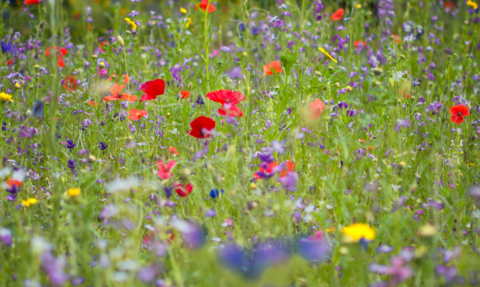
Perfect Plants
Discover the wonderful world of flowers and trees, the building blocks of habitats.
In this workshop, learners will explore our wildflower meadows and flower beds, investigating flower structures and their purpose, looking at the roles of insects in pollination and discovering the life cycle of a plant from seed to seed.
Why not add our hands-on Plant, Grow, Sow workshop? (available only at Tyland Barn for +£1)
Our new Plant, Grow, Sow garden at Tyland Barn provides schools with the opportunity for children to get hands-on with the growing process of plants. With raised beds, polytunnels, potting tables and compost bins, this outdoor classroom provides children with all the resources they need to learn and grow themselves. The garden is fully accessible and able to be used year-round.
- Venue: available at Tyland Barn Nature Park and Sevenoaks Wildlife Reserve
- Setting: Outdoors and covered teaching shelter
- Time: 50 minutes – 90 minutes (depending on number of groups per visit)
National Curriculum Links
Our Perfect Plants session can aid in the learning of the following Key Stage 1 and 2 Science curriculum links and can also be adapted for Key Stage 3 and 4 learners. If there are specific curriculum objectives you are hoping to achieve during your visit, please contact our education team in advance on education@kentwildlife.org.uk or talk to one of our tutors on the day.
Year 1: Plants
- identify and name a variety of common wild and garden plants, including deciduous and evergreen trees
- identify and describe the basic structure of a variety of common flowering plants, including trees.
Year 2: Living things and their habitats
- explore and compare the differences between things that are living, dead, and things that have never been alive
- identify and name a variety of plants and animals in their habitats, including microhabitats
Year 2: Plants
- observe and describe how seeds and bulbs grow into mature plants
- find out and describe how plants need water, light and a suitable temperature to grow and stay healthy.
Year 3: Plants
- identify and describe the functions of different parts of flowering plants: roots, stem/trunk, leaves and flowers
- explore the requirements of plants for life and growth (air, light, water, nutrients from soil, and room to grow) and how they vary from plant to plant
- investigate the way in which water is transported within plants
- explore the part that flowers play in the life cycle of flowering plants, including pollination, seed formation and seed dispersal.
Year 4: Living things and their habitats
- recognise that living things can be grouped in a variety of ways
- explore and use classification keys to help group, identify and name a variety of living things in their local and wider environment
- recognise that environments can change and that this can sometimes pose dangers to living things.
Year 5: Living things and their habitats
- describe the life process of reproduction in some plants and animals.
Year 6: Living things and their habitats
- describe how living things are classified into broad groups according to common observable characteristics and based on similarities and differences, including microorganisms, plants and animals
- give reasons for classifying plants and animals based on specific characteristics.


